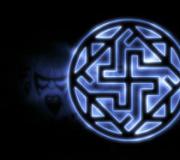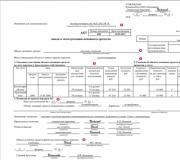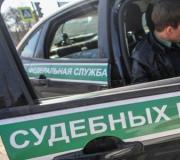Step by step drawing of a person for children. Drawing People for Beginners
Drawing for a child is an activity that not only brings pleasure, but also promotes the development of fine motor skills, as well as thinking, memory, and attention.
When portraying a person for the first time, most children act on the principle “stick, stick, cucumber - here comes the little man.” They do not yet know how to correctly assess perspective and correlate the sizes of different parts of the body. Children draw a huge (or, conversely, too small) head and do not bother themselves with drawing the details. But over time, preschoolers, and then schoolchildren, have a desire to learn how to portray a person correctly. Fortunately, today you don’t have to go to an art school or take individual lessons from fine art teachers. In the article you will find explanations and detailed diagrams of drawing a person for children and adults, using which you can learn how to create completely recognizable images.
Drawing a person with children: from simple to complex
At first glance, step-by-step drawing seems to be an uncreative activity that is not capable of having a positive impact on the development of a child. But this is not true at all.
Performing sequential actions, the child:
- learns to follow instructions;
- learns to decompose a whole image into individual parts;
- fantasizes, makes his own changes to the drawing;
- becomes more independent.
It is very simple to prepare for a lesson in drawing a person for children: all you need is pencils (simple and colored), a sheet of paper and an eraser. The child only needs to follow all the instructions, gradually reproducing on paper the individual details of the drawing. So, pick up a simple pencil and get started!

- Draw an oval, in the place of which the head will later appear.
- A little lower, draw a rectangle (body) and use a segment to connect it to the oval.
- We schematically depict the legs - draw lines starting in the lower corners of the rectangle, and draw arms in the form of lines that start in the upper corners of the rectangle.
- With the help of additional lines we make the hands more realistic and voluminous. We schematically outline the future hands.
- We add volume to the legs - we widen them and draw the feet in the form of small ovals.
- Now we draw ears for our little man - two small semicircles on the sides of the head.
- We depict a hairstyle and add a couple of curls inside the ears to make the image realistic.
- It's time to draw the character's face: beady eyes, nose, mouth and eyebrow stripes.
- We dress the little man: we draw the details of the shirt, paying special attention to the collar and sleeves, and also finish drawing the hands.
- Draw trousers and boots with laces. Our little man is ready!
Our man is almost ready! All that remains is to erase all the extra lines, draw an outline and color. For children, drawing a person step by step is a fun way to learn how to create similar images. In the future, they will be able to draw people, independently inventing the details of the future picture and correctly arranging them on a sheet of paper.
Children love to draw characters from their favorite cartoons or characters from books. Therefore, it is worth inviting the child to depict them on a piece of paper. If the child cannot choose, then he certainly will not refuse to draw his best friend or girlfriend.
It is important to come up with a story for the chosen character. For example, my friend Irina went to visit her grandmother and helped her harvest. Her grandmother gave her a kitten named Vaska, which she will need to take care of. Together they had many incredible adventures.
Items you will need for work
Before you start drawing, you need to prepare the following materials:
Simple pencil;
Black gel pen;
A sheet of white paper;
Colour pencils;
Let's start drawing
When everything you need is ready, you can start drawing. To begin with, draw a straight line in the middle of the sheet. If the child cannot do this, then you can use a ruler. Then the line is divided into two equal parts - the belt will be located at this point.
At the upper end of the straight line you need to draw a head. In order for the child to draw the head correctly, you need to explain to him that in its shape it resembles an egg, but upside down. After this, the torso and pelvis are outlined using ovals.
The lower part of the line is also divided into two approximately equal segments. This is where your knees will be. Using lines, legs and arms are outlined, which should be bent at the elbow joint.
Next, a sketch is made of the outline of the skirt or dress extending from the belt. At this stage, the details of the face and her hair are drawn. To ensure that the ears and eyes are located at the same level, you need to draw straight lines in advance.
Then the girl’s legs and feet are drawn, and the proportions must be observed. When all the details have been drawn, it’s time to move on to the surrounding landscape. For example, the beds and crops that the girl and grandmother collected.
Coloring the drawing
When the picture is completely drawn, then it is time to revive it with the help of colored pencils. First you need to take a black gel pen and carefully trace the entire drawing. Then erase a simple pencil with a pre-prepared eraser.
Next, the drawing is colored. A light pink pencil will be suitable for a girl's face, neck and hands, and a dark pink pencil will be ideal for her cheeks and lips. The eyes may be blue and the hair may be brown. For the dress, you can take blue, purple or light blue.
Next, it remains to paint the surrounding objects and landscape. Grass and trees can be colored with green pencils, the sky - blue, flowers - blue, pink and yellow. If a cat was drawn, then it can be made striped.
Not every mother knows how to draw beautifully, but she will still have to teach her child. In order to help your child learn this difficult task, you should pay attention to the step-by-step educational images. Some children develop talent from childhood. They can draw whenever and wherever they want. Other kids need to be nudged to help them learn something new. Before you begin the learning process, prepare all the necessary materials - pencils, eraser, paper.
We will divide the entire drawing process into several stages. First, we will learn to draw an oval, which will act as a head.

Then we draw a rectangle, which we connect to the oval. Thus, we have a body.


We begin to work on the overall picture - draw all the elements.

Now let’s “put” pants on the character.

Don't forget your ears! Add two semicircles on both sides of the head.

Now let's get to the hairstyle. You can draw ordinary hair, or you can come up with something intricate.

Let's start with the face - eyes, nose, eyebrows, lips. If you haven't worked on your neck yet, now is the time.

In addition, you can add a shirt or other clothes you like.

We work on the palm and fingers - on each one separately.

For realism, add pleats on the panties, since the knees are convex. Don't forget your shoes.

Now you can get rid of the auxiliary lines and add bright colors to the illustration.

Ready! Any kid can handle this drawing. You can complicate the task and add dynamics to the picture by depicting the hero in motion.
Along with this they search and read:
Video: Learning to draw a human face
Drawing a girl's face step by step

This lesson is intended for older children who can already boldly depict a human figure. Study several pictures to decide what style you will work in. It is best to start with cartoon characters, as it will be easy and interesting for the little one. Let your child dream - let him go beyond the usual lines and come up with something of his own.
Stage 1. Draw an oval, which we divide into two halves with a horizontal line - the upper part should be larger than the lower. Using a vertical line we divide the face into equal halves. We draw another horizontal line, as in the example. The lines represent the girl's nose, eyes and mouth. At the end we'll just erase them.

Stage 2. Now we mark the nose, mouth area, lips. Please note that the lower lip should be larger than the upper lip.

Stage 3. Mark the place for the eyes. We depict the inner part of the eye focusing on the edges of the nose - these parameters should be parallel. Pay attention to the distance between the eyes - it should not be less than the length of the eye itself. Draw neat eyebrows.

Stage 4. Working on the mouth and lips. In order to determine the length of the mouth, draw two lines down from the inner corners of the eyes.

Stage 5. Erase the auxiliary lines, you can add shadows to give the image volume.

Stage 6. Add realism - cheekbones, shadows, darken the wings of the nose and chin. Paint over the pupil of the eye and add highlights. Don't forget about eyelashes! Ready.

Such a drawing will not be difficult for schoolchildren to repeat, especially if their talent is clearly visible. Experiment with characters and drawing materials. First, study the proportions, direction of lines, shadows, and then feel free to break the rules and come up with something of your own.
Master class “Drawing for the little ones.”
Shatokhina Rita Vyacheslavovna, teacher of additional education at the MBU DO “House of Children's Creativity in Kalininsk, Saratov Region.”
This master class is intended for additional education teachers and preschool teachers. The master class will also be of interest to little artists aged 4 years and older and their parents.
Purpose: This master class is a short drawing course for little ones, which shows how to draw with geometric shapes.
Target: creating conditions for acquiring drawing skills.
Tasks: teach your child how to draw familiar images using geometric shapes;
instill the skills to carefully work with paints and brushes;
develop creative imagination and fine motor skills.
The kids who come to my association for classes are still very young, but they really want to draw. From experience working with children, I realized that it is easier for them to draw with geometric shapes. Children draw according to my demonstration, step by step. When starting a lesson, I never tell the children what we are going to draw today. I know from experience that they find it more interesting. In the process, they guess who they are drawing, and this brings them a lot of joy. And everyone’s drawings are different.
Master class on drawing for children “Snail”
Prepare: A4 landscape sheet, watercolor paints, brushes of different sizes, a jar for water and a napkin.

Before we start painting, I tell the children that the paints are sleeping and need to be woken up by gently stroking them with a brush. Let’s wake up the yellow paint first and start painting.
Draw a bun in the center of the sheet, gradually unwinding the brush, and then draw an arc with brown paint.

We turn the arc into a loop.

We draw the horns and paint them over.

Decorating the snail's house.

We draw the eyes and mouth of the snail. Next, the children themselves come up with and decorate the background of the picture: where is the snail?

Children's works:


Master class on drawing for children “Turtle”.
Draw a “bun” in the center of the sheet with yellow paint, and draw 4 loops with brown paint.

The fifth loop is drawn larger in size; we paint over all the loops.

We draw circle eyes, first with white paint, then with black.

Decorate the turtle shell. The child can come up with his own pattern.

Master class on drawing for children “Fish”
We draw a “bun” with yellow paint, draw arcs: top and bottom, it looks like an eye.

Draw a triangle tail for the fish. Then we decorate the fish with red paint. draw with a brush: mouth, fins.

We draw scales and decorate the tail.

We “print” with a brush: we draw pebbles and water, draw lines with green algae paint.

Draw the eye of the fish with black paint. Black paint likes to play around, so we are especially careful with it.

"Winter meadow".
Take a sheet of blue color, A4 format. We paint the koloboks with white paint. We draw lines, draw snowdrifts.

Using brown paint we paint the trunk and branches of the trees, hands, eyes, mouth and broom of the snowman.

Decorate the drawing with snowflakes. Decorate the snowman: draw a bucket on his head and a scarf. Children complete the drawing and decorate it.

Using the same principle, you can draw an autumn forest, only initially the koloboks will be yellow, orange and green, and leaf fall, we draw by applying a brush, and print. Children's work:


Master class on drawing for children “Hedgehog”.
We draw the “bun” with brown paint.

Draw a triangle nose.

Child's work.
We draw a clearing for the hedgehog, the children fantasize.


Child's work:

Master class on drawing for children “Frog”.
Take a sheet of blue color, A4 format. Draw a “bun” in the center with green paint.

We draw another “bun”, and on top there are two “bridges”.

We draw the frog's legs, draw the children's attention to the fact that the frog's legs differ in their structure, which helps the frog to jump well and stay on even the most slippery surface.

We draw the frog's mouth and eyes. We decorate the picture after talking with the children: where does the frog live?

Master class on drawing for children “Cockerel”.
We draw a large bun - the body, a smaller bun - the head. We connect them with smooth lines, we get a neck.

We draw the cockerel's legs-triangles and tail, lines-arcs.

Use red paint to paint the cockerel's comb (bridges), beak and beard, and apply a brush.




